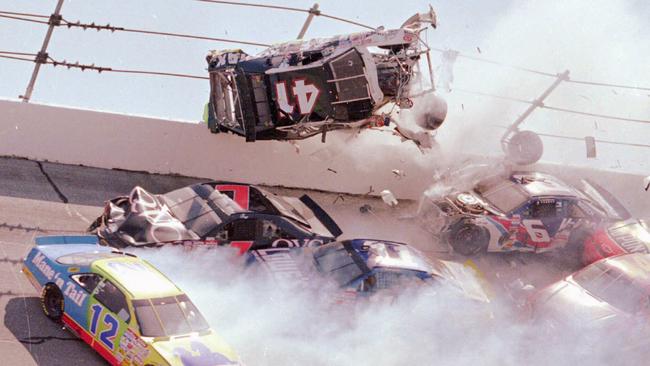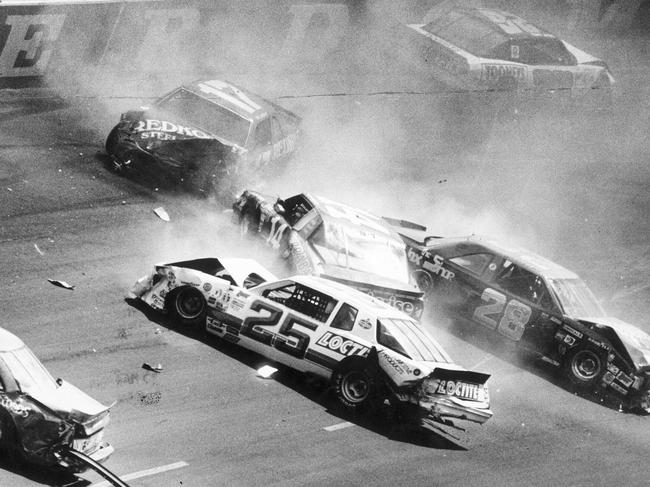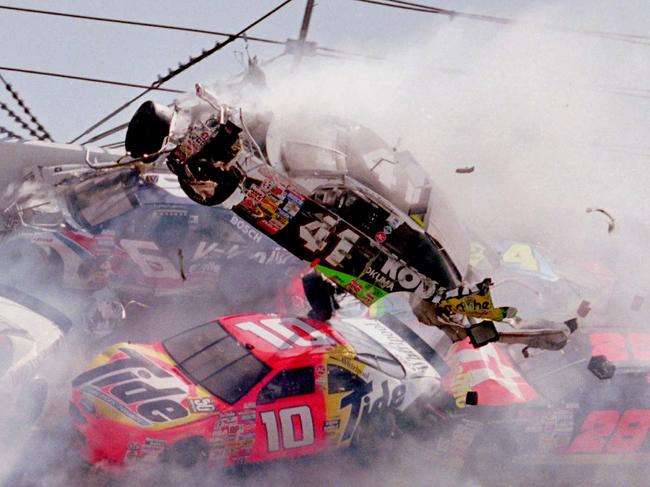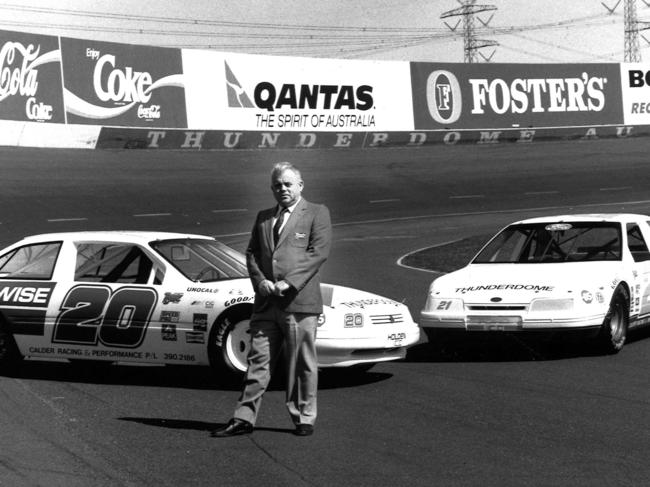NASCAR born on dirt track 70 years ago to find best driver rather than best car
Charlotte Speedway was the venue for an exciting new concept in motor racing, designed to find the best driver rather than the best car

NSW
Don't miss out on the headlines from NSW. Followed categories will be added to My News.
Eleven-year-old Richard Petty was there to watch his father Lee compete at a course known as the Charlotte Speedway, a dirt track at Concord in North Carolina, 21km outside Charlotte.
Richard would have been excited enough to see his dad race, but there was an extra sense of excitement in
the air that day — June 19, 1949 — because this would be the first “all stock” car race run under the banner
of the recently formed National Association For Stock Car Auto Racing, or NASCAR.
All stock meant just that, the cars had to be stock-standard, unmodified cars produced by automobile manufacturers. The idea was to establish the best driver rather than who had the best car.
The brainchild of ‘Big Bill’ France, a former petrol station owner and long-time petrol head, a crowd of about 13,000 turned out for the race, 70 years ago today, the only one of its kind then operating in the US. Many of the spectators were only there on the off chance of seeing a spectacular crash and they weren’t disappointed. Petty obliged them by flipping his car but wasn’t injured.
Driver Glenn Dunaway was first over the line in his 1947 Ford, but inspectors found the owner of the car, mechanic Hubert Westmoreland, had used an old bootlegger’s trick of spreading the car’s rear springs to improve handling.

Dunaway was disqualified and “Alfalfa” Jim Roper declared the winner.
France’s event proved to be very popular and established the NASCAR races among the premier motor racing events in the world.
While modifications eventually crept into the race, mainly for reasons of safety and performance under such gruelling conditions, the concept has remained essentially the same, with cars at least superficially resembling stock production cars and with all of the thrill of speed, noise and the occasional crash that were a feature of those early races.
MORE
Star’s father guilty of crime of the century
Stock car racing in the US really owes much to Prohibition.
When the US government outlawed alcohol under the Eighth Amendment in 1920, people producing or importing illegal alcohol often bought the best possible cars to outrun the police when transporting their booze.
Informal competitions were organised between car owners to see who was fastest and to set their own speed records.
One popular place to race was the Daytona Beach Road Course in Florida where, in 1927 Major Henry Segrave set a land speed record.
The regular unofficial races along the strip between bootleggers had become a fixture by the 1930s. Even after Prohibition was repealed in 1933 clandestine alcohol producers ran their “moonshine” in hotted-up cars to avoid paying taxes.

Bill France, born in Washington D.C. in 1909, grew up fascinated by cars. As a teenager he enjoyed racing around in the family’s Model T Ford.
He ended up running a petrol station but when the Great Depression hit the family moved to Daytona where France was in a better position to indulge his passion for motor racing.
He entered the 1936 Daytona race for family sedans coming a respectable fifth before joining forces with the promoter to help run subsequent races.
He eventually took over running the Daytona track where he held and competed in several races before World War II halted all motorsport.
After the war France gave
up driving in races in favour of promoting them. He envisaged a national unified competition with set rules, insurance for drivers and guaranteed prizemoney.
In December 1947 he met with drivers, mechanics and car owners and they decided to form their own stock car association, NASCAR. Originally there were plans to have three classes of race — modified cars, roadsters (two-seater convertibles) and stock cars. But the first races held by NASCAR were only in the roadster and modified category, because manufacturers were slow to produce new family sedans.

The roadster category was ditched because it was unpopular, but modifieds found an audience from the first race in February 1948.
The first all stock race, however, was not run until the Charlotte event on June 19, 1949.
Daytona later became the showcase track, with its famous Daytona 500 race first held in 1959 won by Lee Petty (his son Richard would also later become a NASCAR champion).
NASCAR later spread around the world and in 1987 Allan Grice became the first Australian to qualify for the elite levels of NASCAR in the US.
That same year Australian touring car champ and T-Mart magnate Bob Jane started up a NASCAR competition in Australia.
It ran until 2001.
Originally published as NASCAR born on dirt track 70 years ago to find best driver rather than best car



